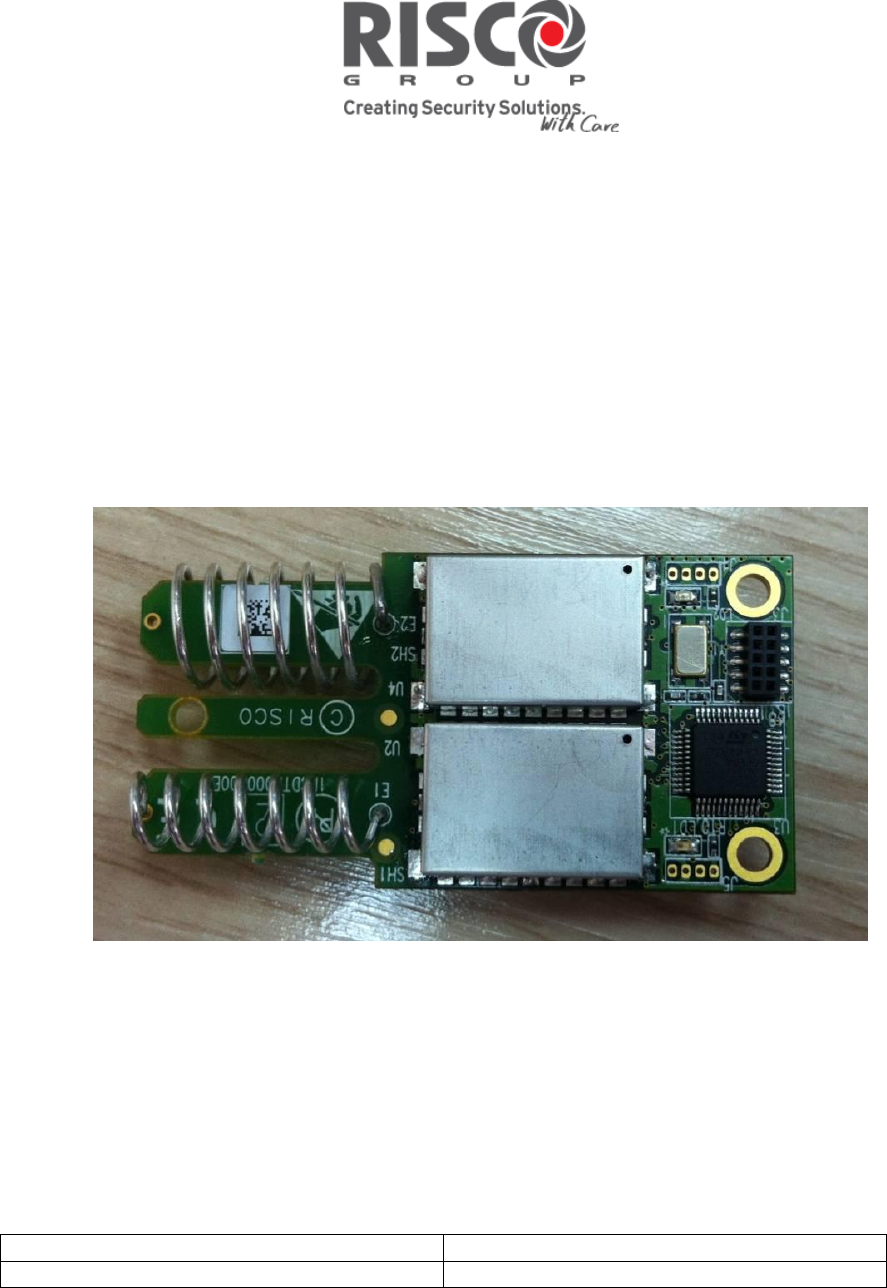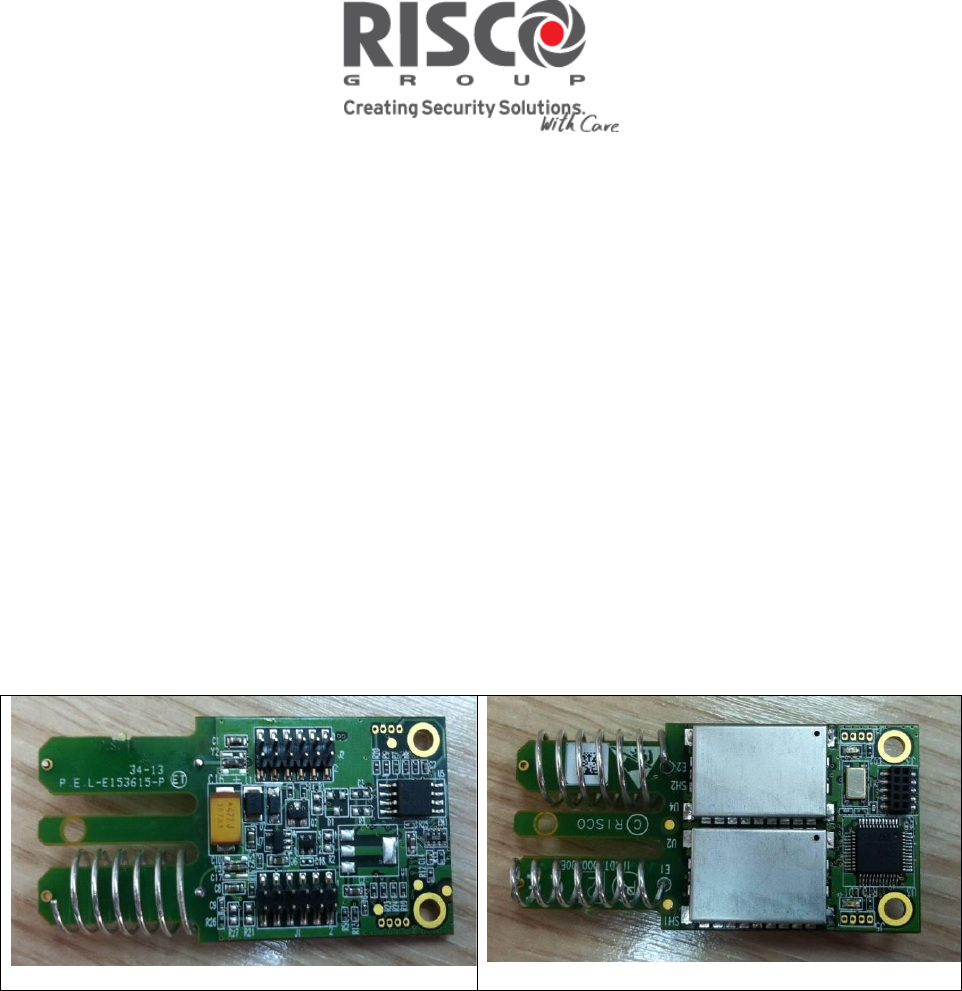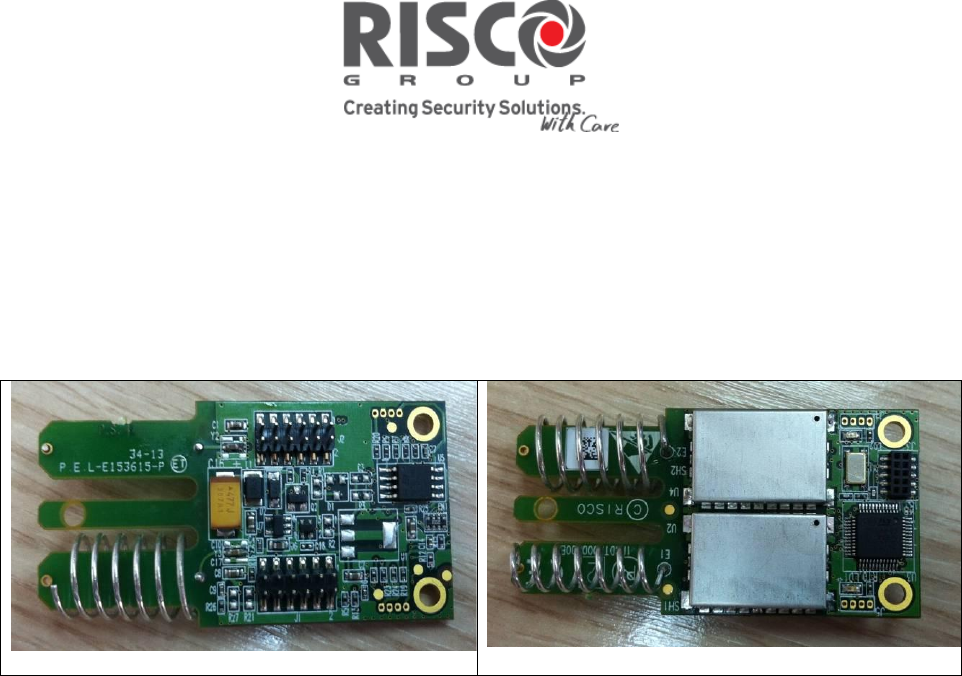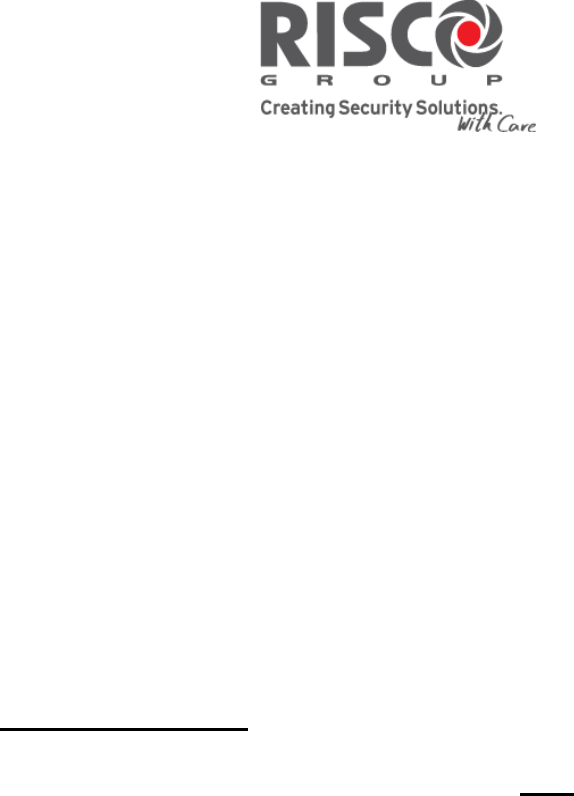Risco STAMP433-916 433 MHz and 916 MHz RF MODULE User Manual
Risco Ltd. 433 MHz and 916 MHz RF MODULE
Risco >
User Manual

Page 1 of 4
© 2014 by Risco Group Ltd. All rights reserved.
Risco Group Modular
Certification
Instructions to OEM
P/N Number: RWDTR4S916VE-40
FCC ID: JE4STAMP433-916
1. Revision History
Revision
Revision Description of Changes
3 April 2014
Initial Release
2. Introduction

Page 2 of 4
© 2014 by Risco Group Ltd. All rights reserved.
This document describes mandatory steps required by the OEM
Integrator when assembling the RF Module to the unit.
This document lists the mandatory responsibilities and actions of the OEM
integrator.
Failure to comply with all requirements and conditions in this document may
result in non compliance of the device with FCC rules and invalidate the RISCO
Group FCC certification for the RF Module.
3. Overview
The RWDTR4S916VE-40 is a RF Module transmits in 433.92Mhz and 916Mhz. Is
an add-in unit that can be incorporated into security alarm systems. The RF
Module offers connectivity to or from the main panel a security system.
Pic 1

Page 3 of 4
© 2014 by Risco Group Ltd. All rights reserved.
4. Installation instruction
Assemble the RF Module, pay attention to polarity (see Pic 2).
Pic 2
5. FCC statement
This equipment has been tested and found to comply with the limits for a
class B digital device, pursuant to part 15 of the FCC Rules. These limits
are designed to provide reasonable protection against harmful interference
in a residential installation. This equipment generates, uses and can radiate radio
frequency energy and if not installed and used in accordance with the
instructions, may cause harmful interference to radio communications.
However, there is no guarantee that interference will not occur in a
particular installation. If this equipment does cause harmful interference to
radio or television reception, which can be determined by turning the
equipment off and on, the user is encouraged to try to correct the
interference by one or more of the following measures:
1. Reorient or relocate the receiving antenna.
2. Increase the separation between the equipment and receiver.
3. Connect the equipment into an outlet on a circuit different from that to

Page 4 of 4
© 2014 by Risco Group Ltd. All rights reserved.
which the receiver is connected.
4. Consult the dealer or an experienced radio/TV technician for help.
In order to maintain compliance with FCC regulations, shielded cables
must be used with this equipment. Operation with non-approved
equipment or unshielded cables is likely to result in interference to radio
and TV reception. The user is cautioned that changes and modifications
made to the equipment without the approval of manufacturer could void
the user's authority to operate this equipment.
Contains Transmitter Module FCC ID: JE4STAMP433-916
This device complies with Part 15 of the FCC Rules. Operation is subject to
the following two conditions:
1. This device may not cause harmful interference.
2. This device must accept any interference received, including Interference
that may cause undesired operation.
6. OEM instructions
1. The RF module is limited to OEM installation only.
2. The OEM integrator is responsible for that the end-user has no manual
instructions to remove or install the module.
3. The module is limited to installation in mobile or fixed applications,
according to part 2.1091(b).
4. Separate approval is required for all other operating configurations,
including portable configurations with respect to part 2.1093 and different
antenna configurations.
5. Labeling instructions of finished products must contain the following –
contains module FCC ID: JE4STAMP433-916
The OEM/ integrator must include the following instructions/statements in
the host user’s manual (i.e. end product).
1. Statement is required per FCC part 15.19 and 15.21.